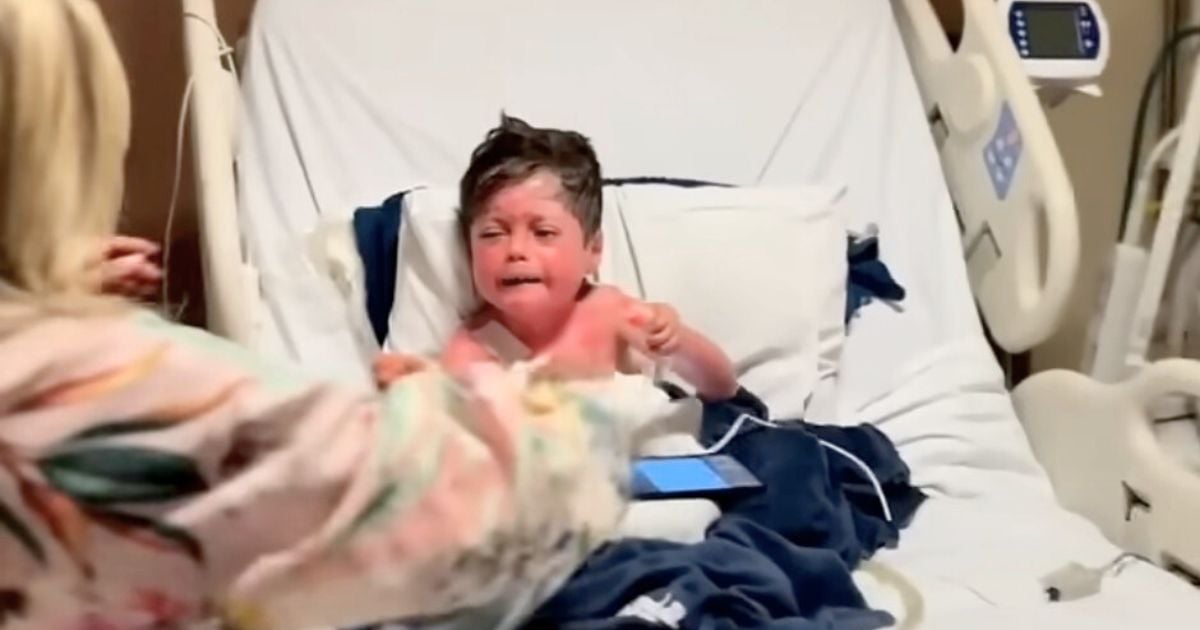Most people adore babies. They’re so, so cute and bring lots of joy to our lives. But many new parents are caught off guard by how complex child rearing can really be. Many aren’t able to interpret these signs that all babies make.
When asked, most people would say that babies only really do a few things: Eat, cry and poop.
But there’s much more complexity to the world of babies than just these three things.
Yes, babies do cry and cry and cry. But it turns out that they cry in many different ways. And each sort of cry means something different.
What do these following cries mean exactly?
What’s happening when a baby cries for about five to six seconds and then is quiet for about 15 to 30 seconds?


If a parent doesn’t pick it up in this quiet time, then it’s sixish seconds of crying again and about half a minute of silence again. And repeat until it’s picked up.
That’s the cry that a baby makes when a parent hasn’t held them for a long time. It’s easier to detect this one through the sound the baby makes rather than the face it makes.
And then it gets a little more complicated.
What happens if a cry starts off like this, but after a few pauses, the cry becomes continuous?


That means it’s a hunger cry. If a baby is picked up after making a pick up cry and isn’t fed, it’ll also start this continuous hunger cry.
You can also tell if it’s a hunger cry because the baby starts rotating its head back and forth while making sucking sounds with its mouth.
The next cry is something that’s incredibly important for parents to detect.
What if the baby’s cry is constant, loud and of the same tone?


Then that’s a pain cry. Sometimes, there will be quick bursts of frantic crying, when the pain increases. If a baby’s pain gets so bad, the crying will continue but quieter.
But what about when the baby cries with a light whine and squeak?
That means that it’s telling you it’s been to the bathroom or is gassy.
This one’s a little easier.
What if the baby’s whine is one smooth sound with a yawn at the end?


Then it means it wants to sleep but can’t. Many adults are exactly the same when they can’t sleep because something’s annoying them.
But what if the baby is fidgeting a lot when it cries?


That means that the baby is uncomfortable. It will keep flailing around. Often the crying here will stop and start every few seconds.
And what about when a baby is making noises, whether it’s a cry, a screech or a babble in a range of different tones?
In that case, the baby is just learning to use its voicebox better. It means that they’re growing up.
That’s enough about crying, as any parent doesn’t want to spend too long reading about the thing that’s keeping them up all night.
Although crying is clearly a primary method of a baby communicating, there are movements that say things that aren’t necessarily accompanied with crying.
For instance, what is happening when babies that are under two months arch their backs?


This means that the baby is full after eating. It could also mean that it is in pain or experiencing reflux. Babies over two months do this too. But that means that it is tired or in a bad mood.
What if a baby rotates its head?
It’s trying to calm itself down. That’s an early sign that the baby’s falling asleep. It can also do this if it’s in a new environment.
How about if a baby grabs its ears?


That’s a sign that the baby’s developing normally and is starting to become aware of its own body. A parent should only be worried about its health if the baby cries and grabs its ears while crying.
What if the baby clenches its fists?


The baby isn’t trying to show off its strength. It’s just hungry. Clenching often occurs before hunger crying.
What if the baby is trying to lift its legs?


That means that the baby has a stomach ache. The baby’s trying to ease that pain by shifting its belly around.
What about when the baby is kicking its legs rapidly?
That means that the baby is happy. The parents are obviously doing something right when this happens.
How about when a baby flails its arms around?


In that case, the baby is frightened. Pick it up and reassure it before the crying starts!
What about if a baby keeps grabbing at a chin or sleeve of their parent?


The baby just wants attention. It’s often trying to communicate something else after this.
What about if a baby purses its lips?
That’s a more subtle way of saying that it wants attention.
And what if the baby keeps on turning its head away from a parent?


That means that it’s not interested in what the parent wants the baby to do. It may not want any more food, or maybe it’s bored with the game that it’s playing.
And, of course, there are some sounds that are basically universal. Pediatricians have studied babies across the world and discovered that they all make similar noises when they want certain things.
For instance, what does it mean when the baby makes a sucking noise that turns into a “neh” whine?
That means the baby is hungry.
Sometimes, a baby goes “eh, eh, eh,” in a kind of grunting way. What does that say?
It’s the baby trying to burp when it can’t quite manage it.
If a parent can recognize these signs, then it can save hundreds of hours of stress!
Instead of going “Why is it crying? What is it trying to say!? Arrrgh,” a parent will be able to respond to the baby with what it needs.
And that’s the first step to becoming an incredible parent! What a lucky baby!
Please SHARE this with your friends and family.















